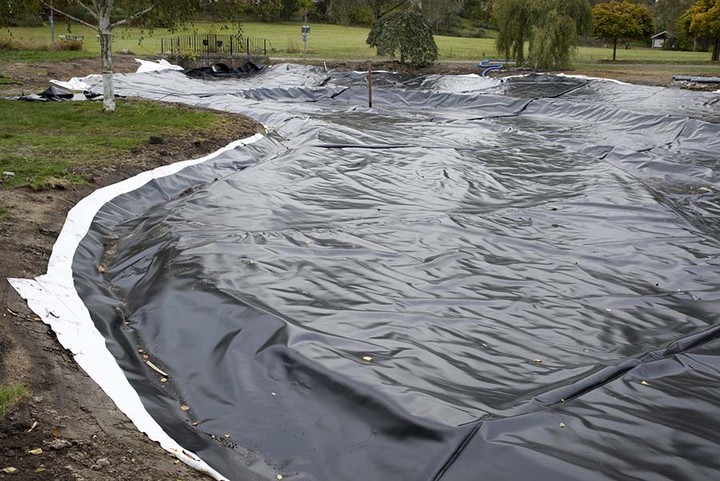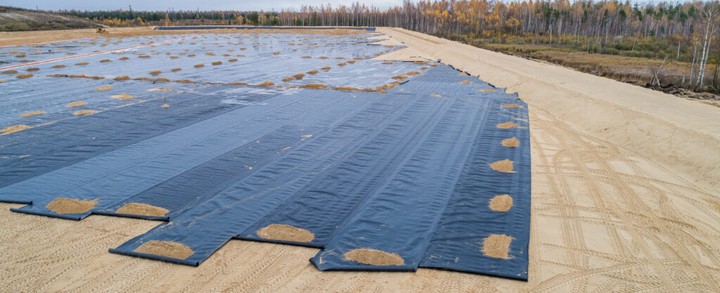The geomembrane industry has undergone significant development over the years, becoming an essential component in various sectors such as environmental protection, construction, and agriculture. As manufacturers in this growing industry, we aim to provide insights into its current status and future trends. In this article, we will explore the advancements, challenges, and potential growth opportunities in the geomembrane market.

I. Current Market Overview
The Rise of Geomembranes
Geomembranes have emerged as a critical material in modern engineering projects. They are widely used for their excellent impermeability, chemical resistance, and durability. Applications such as landfill liners, mining operations, and aquaculture ponds have driven the demand for these materials globally.
The market is witnessing increased adoption of high-density polyethylene (HDPE) geomembranes, especially the popular geomembrana hdpe 1 mm, due to their cost-effectiveness and superior performance. These geomembranes are preferred in projects requiring long-term reliability and environmental safety.
Key Market Drivers
Several factors contribute to the growing demand for geomembranes:
Stringent Environmental Regulations: Governments worldwide are enforcing stricter regulations to prevent soil and water contamination, driving the adoption of geomembranes in waste management and water treatment projects.
Infrastructure Development: Rapid urbanization and infrastructure development projects, such as road construction and tunnels, require the use of geomembranes to ensure structural stability and environmental compliance.
Technological Advancements: Innovations in geomembrane manufacturing, including the development of better materials and production techniques, are enhancing product quality and expanding application areas.
II. Challenges Facing the Industry
Despite its rapid growth, the geomembrane industry faces several challenges that require attention:
Raw Material Costs: Fluctuating prices of raw materials like polyethylene can impact the profitability of manufacturers and the affordability of products for end users.
Skilled Labor Shortage: The installation of geomembranes often requires specialized skills, and a shortage of trained professionals can delay projects.
Market Competition: With numerous manufacturers entering the market, competition is intensifying. To remain competitive, businesses must focus on producing the best geomembrane products that meet or exceed industry standards.
III. Future Trends in the Geomembrane Industry
Increasing Focus on Sustainability
Sustainability is becoming a key consideration in the geomembrane industry. Manufacturers are investing in eco-friendly production processes and recyclable materials to reduce their environmental footprint. The integration of recycled polymers in geomembranes is expected to gain traction, aligning with global efforts to promote sustainable practices.
Expansion of Applications
The range of applications for geomembranes is expanding beyond traditional sectors. For instance, the agricultural sector is increasingly using geomembranes for irrigation ponds, reservoirs, and greenhouse linings. The use of geomembrana hdpe 1 mm is particularly prevalent due to its ability to withstand harsh environmental conditions while maintaining flexibility.
Technological Advancements
Continuous innovation in manufacturing processes is expected to improve the quality and performance of geomembranes. New technologies, such as enhanced multi-layer coextrusion and advanced welding techniques, will likely result in more efficient and durable products. These advancements will also help create the best geomembrane solutions for specialized applications.
Growing Demand in Emerging Markets
Emerging markets, especially in Asia-Pacific, Latin America, and Africa, are expected to drive the future growth of the geomembrane industry. Increasing investments in infrastructure, mining, and agriculture in these regions will create significant opportunities for manufacturers.
Smart Geomembranes
As industries adopt smart technologies, the development of “smart geomembranes” with integrated sensors to monitor leaks, temperature, and stress levels is becoming a possibility. These innovations will further enhance the safety and efficiency of geomembrane applications.
IV. Conclusion
The geomembrane industry is poised for substantial growth, driven by increasing demand for high-performance materials in various sectors. While challenges such as raw material costs and market competition persist, advancements in technology and a focus on sustainability are paving the way for new opportunities. As a leading manufacturer, our commitment to providing the best geomembrane products, including geomembrana hdpe 1 mm, ensures that we meet the evolving needs of our clients while contributing to the industry’s development.
By staying ahead of trends and continuously innovating, the geomembrane industry will continue to thrive, offering solutions that protect the environment and support global development.
